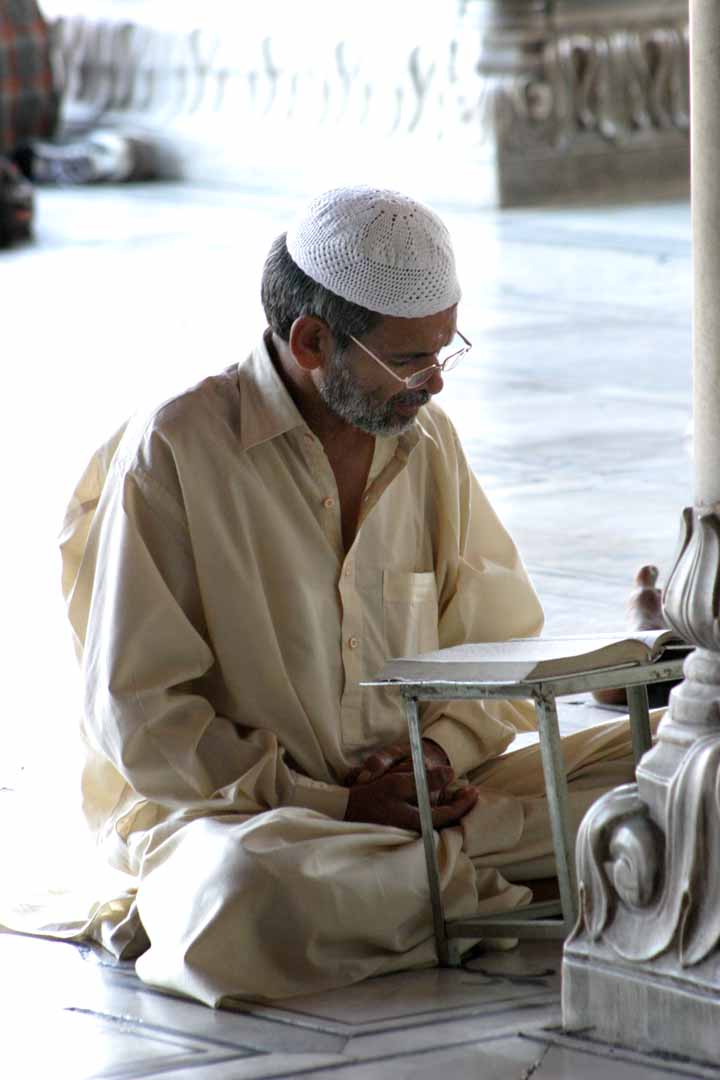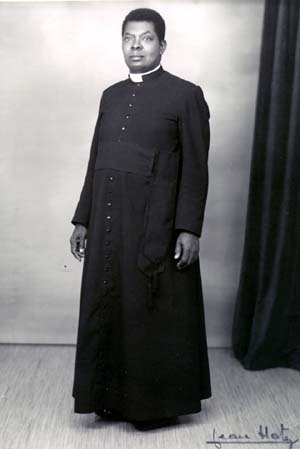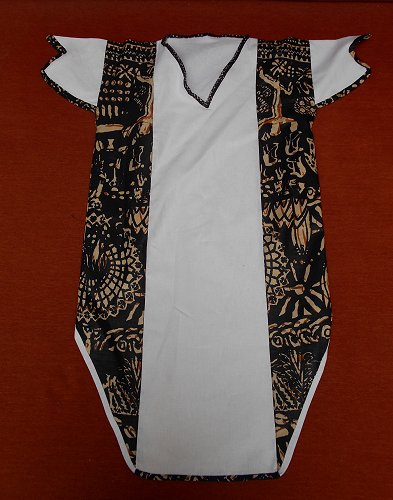|
White Fathers
The White Fathers (), officially known as the Missionaries of Africa (), and abbreviated MAfr, are a Roman Catholic society of apostolic life of pontifical right (for men). They were founded in 1868 by Charles-Martial Allemand-Lavigerie, who was then the Archbishop of Algiers. The society focuses on evangelization and education, primarily in Africa. As of 2021, the Missionaries of Africa comprised 1,428 members from 36 nationalities, working in 42 countries across 217 communities. History The cholera epidemic of 1867 caused the death of 80,000 people in French Algeria and left a large number of Algerian orphans, prompting the establishment of the society of White Fathers in Maison-Carrée (now El-Harrach), near Algiers. While the initial focus of the White Fathers was on the education and Christian instruction of these children, the society's founder, Charles-Martial Allemand-Lavigerie, who was then the Archbishop of Algiers, envisioned the society's mission extending ... [...More Info...] [...Related Items...] OR: [Wikipedia] [Google] [Baidu] |
Charles Lavigerie
Charles Martial Allemand Lavigerie, M. Afr. (31 October 1825 – 26 November 1892) was a French Catholic prelate and missionary who served as Archbishop of Carthage and Primate of Africa from 1884 to 1892. He previously served as Archbishop of Algiers and Bishop of Nancy. He also founded the Missionaries of Africa (White Fathers). He was created a cardinal in 1882. After becoming a bishop in France, Lavigerie established French Catholic missions and missionary orders to work across Africa. Lavigerie promoted Catholicism among the peoples of North Africa, as well as the Black natives further south. He was equally ardent to transform them into French subjects. He crusaded against the slave trade, and he founded the White Fathers, so named for their white cassocks and red fezzes. He also established similar orders of brothers and nuns. He sent his missionaries to the Sahara, Sudan, Tunisia, and Tripolitania. His efforts were supported by the pope and the German Chancellor O ... [...More Info...] [...Related Items...] OR: [Wikipedia] [Google] [Baidu] |
El-Harrach
El Harrach (Berber: ⵍⵃⴻⵔⵔⴰⵛ , formerly ''Maison-Carrée'') is a suburb of the Algerian capital Algiers. The town is home to USM El Harrach Union Sportive de la Médina d'El Harrach (), known as USM El Harrach or simply USMH for short, is an Algerian Association football, football club based in El Harrach, a suburb of Algiers. The club was founded in 1935 as Union Sportive Musulmane ... football club and the Higher National Veterinary School is located in the area. See also * Massacre of El Ouffia (6 April 1832) References External links The official website of the town of El-Harrach Suburbs of Algiers Communes of Algiers Province Algiers Province {{Algiers-geo-stub ... [...More Info...] [...Related Items...] OR: [Wikipedia] [Google] [Baidu] |
Rosary
The Rosary (; , in the sense of "crown of roses" or "garland of roses"), formally known as the Psalter of Jesus and Mary (Latin: Psalterium Jesu et Mariae), also known as the Dominican Rosary (as distinct from other forms of rosary such as the Rosary-based prayers, Franciscan Crown, Bridgettine Rosary, Rosary of the Holy Wounds, etc.), refers to a set of prayers used primarily in the Catholic Church, and to the physical string of knots or beads used to count the component prayers. When referring to the prayer, the word is usually capitalized ("the Rosary", as is customary for other names of prayers, such as "the Lord's Prayer", and "the Hail Mary"); when referring to the prayer beads as an object, it is written with a lower-case initial letter (e.g. "a rosary bead"). The prayers that compose the Rosary are arranged in sets of ten Hail Marys, called "decades". Each decade is preceded by one Lord's Prayer ("Our Father"), and traditionally followed by one Glory Be. Some Catholics ... [...More Info...] [...Related Items...] OR: [Wikipedia] [Google] [Baidu] |
Zucchetto
The zucchetto (, also ,"zucchetto" (US) and , ; meaning 'small gourd', from ''zucca'' 'pumpkin' or more generally 'gourd'; plural in English: zucchettos) or solideo, officially a pileolus, is a small, hemispherical, form-fitting ecclesiastical cap, skullcap worn by clergy, clerics of various Catholic Church, Catholic Churches, the Syriac Orthodox Church, by senior clergy in certain denominations of Lutheranism, as well as Anglicanism, and in certain cases by senior clergy in Methodism. It is also called a pilus, pilos, pileus, pileolo, subbiretum, submitrale, soli deo, berrettino, calotte or calotta. History The zucchetto originated as the Paleo-Balkanic ''Pileus (hat ...[...More Info...] [...Related Items...] OR: [Wikipedia] [Google] [Baidu] |
Taqiyah (cap)
The Taqiyah (, ALA-LC: ''ṭāqīyah''Turkish language, Turkish: "takke", Urdu, Hindi "topi", , ALA-LC: "ṭopī", , ''ṭupi'', Somali language, Somali: "Koofi")), also known as tagiyah or araqchin (; ), is a short, rounded Wiktionary:skullcap, skullcap worn by Muslim men. In the United States and the United Kingdom, it is also referred to as a "kufi", although the Kufi typically has more of an African connotation while the taqiyah has a more universal connotation. Aside from being an adornment, the taqiyah has deeply ingrained significance in Islamic culture, reflecting the wearer's faith, devotion, and sometimes regional identity. While the taqiyah is deeply rooted in Muslim traditions, its use varies based on cultural context rather than strict religious guidelines. In Arab states of the Persian Gulf, with the exception of Oman, the taqiyah is commonly worn under a ghutra. In Turkmenistan, taqiyahs are called tahýa in the Turkmen language and are a Turkmen national headd ... [...More Info...] [...Related Items...] OR: [Wikipedia] [Google] [Baidu] |
Mantle (vesture)
A mantle (; ) is an ecclesiastical garment in the form of a very full cape that extends to the floor, joined at the neck, that is worn over the outer garments. Especially in the case of Elijah, it was likely a tallit, a Hebrew garment that housed the fringes still seen today which are also translated at “the hem of His garment” in the New Testament. It is also likely that further ecclesiastical garments were based originally on this one. In the Eastern Orthodox Church and the Catholic Church, the mantle is a monastic garment worn by bishops, hegumens, archimandrites, and other monastics in processions and while attending various church services, such as Vespers or Matins; but not when vested to celebrate the Divine Liturgy. Unlike the Western cope, the mantle is worn only by monastics. The klobuk is worn over the mantle. Christian knights, many of whom take monastic vows, wear a mantle as well, often containing Christian symbols. Knights of the Order of the Holy ... [...More Info...] [...Related Items...] OR: [Wikipedia] [Google] [Baidu] |
Burnous
A burnous (), also burnoose, burnouse, bournous or barnous, is a long cloak of coarse woollen fabric with a pointed hood, often white, traditionally worn by Arabs, Arab and Berbers, Berber men in North Africa. Historically, the white burnous was worn during important events by men of high positions. Today, men of different social standing may wear it for ceremonial occasions, such as weddings or on religious and national holidays. Origin The word burnous () is an Arabic word for a "long, loose hooded cloak worn by Arabs", which itself is derived from the Greek language, Greek word "birros". The word is found in a hadith by Muhammad that prohibited the burnous and various other clothing during Hajj. In Mashriq, Mashriqi sources, it denotes a long hood or body garment. The burnous was also present in the early Muslim Arabian Peninsula. Various nineteenth century sources have referred to the burnous as an Arab cloak. In antiquity this garment was referred to as ''byruss Numidicus'' ... [...More Info...] [...Related Items...] OR: [Wikipedia] [Google] [Baidu] |
Cassock
The cassock, or soutane, is a Christian clerical clothing, clerical coat used by the clergy and Consecrated life, male religious of the Oriental Orthodox Churches, Eastern Orthodox Church and the Catholic Church, in addition to some clergy in certain List of Protestant denominations, Protestant denominations such as Anglicanism, Anglicans and Lutheranism, Lutherans. "Ankle-length garment" is the literal meaning of the corresponding Latin term, . It is related to the Religious habit, habits traditionally worn by nuns, monks, and friars. The cassock derives historically from the tunic of classical antiquity that in ancient Rome was worn underneath the toga, and the Chiton (garment), chiton that was worn beneath the himation in ancient Greece. In religious services, it has traditionally been worn underneath vestments, such as the alb. In the West, the cassock is little used today except for religious services, save for Traditionalist Catholicism, traditionalist and those other C ... [...More Info...] [...Related Items...] OR: [Wikipedia] [Google] [Baidu] |
Gandoura
The Gandoura, also Gandura (), is a kind of light tunic, in wool or cotton, with or without sleeves. It normally comes in colored stripes, or more simply white, and is worn primarily in North Africa and Western Asia. The term gandoura is Arabic in origin. In Algeria, there are two varieties of gandoura. The first is worn by women and is also known as Djebba Fergani, Jebba Fergani. It is a traditional Algerian garment made of thick velvet that originated in the Constantine region. The other form of gandoura is one worn by Algerian men; it is a casual clothing similar to the Djellaba, Jellaba but it lacks a hood. See also * Djellaba * Burnous * Fez (hat), Fez References Moroccan clothing Robes and cloaks Algerian clothing {{clothing stub ... [...More Info...] [...Related Items...] OR: [Wikipedia] [Google] [Baidu] |
Vestments
Vestments are liturgical garments and articles associated primarily with the Christian religion, especially by Eastern Churches, Catholics (of all rites), Lutherans, and Anglicans. Many other groups also make use of liturgical garments; among the Reformed (Calvinist) Churches this was a point of controversy in the Protestant Reformation and sometimes since, in particular during the ritualist controversies in the Church of England in the 19th century. Origins In the early Christian churches, officers and leaders, like their congregations, wore the normal dress of civil life in the Greco-Roman world, although with an expectation that the clothing should be clean and pure during holy observances. From the 4th century onward, however, modifications began to be made to the form of the garments, and, as secular fashions changed from the 6th century, the church retained the original forms of their garments, although with separate development and with regional variations. Having ... [...More Info...] [...Related Items...] OR: [Wikipedia] [Google] [Baidu] |
Christianity
Christianity is an Abrahamic monotheistic religion, which states that Jesus in Christianity, Jesus is the Son of God (Christianity), Son of God and Resurrection of Jesus, rose from the dead after his Crucifixion of Jesus, crucifixion, whose coming as the Messiah#Christianity, messiah (Christ (title), Christ) was Old Testament messianic prophecies quoted in the New Testament, prophesied in the Old Testament and chronicled in the New Testament. It is the Major religious groups, world's largest and most widespread religion with over 2.3 billion followers, comprising around 28.8% of the world population. Its adherents, known as Christians, are estimated to make up a majority of the population in Christianity by country, 157 countries and territories. Christianity remains Christian culture, culturally diverse in its Western Christianity, Western and Eastern Christianity, Eastern branches, and doctrinally diverse concerning Justification (theology), justification and the natur ... [...More Info...] [...Related Items...] OR: [Wikipedia] [Google] [Baidu] |
Africans
The ethnic groups of Africa number in the thousands, with each ethnicity generally having their own language (or dialect of a language) and culture. The ethnolinguistic groups include various Afroasiatic, Khoisan, Niger-Congo, and Nilo-Saharan populations. The official population count of the various ethnic groups in Africa is highly uncertain due to limited infrastructure to perform censuses, and due to rapid population growth. Some groups have alleged that there is deliberate misreporting in order to give selected ethnicities numerical superiority (as in the case of Nigeria's Hausa, Fulani, Yoruba, and Igbo peoples). A 2009 genetic clustering study, which genotyped 1327 polymorphic markers in various African populations, identified six ancestral clusters. The clustering corresponded closely with ethnicity, culture, and language. A 2018 whole genome sequencing study of the world's populations observed similar clusters among the populations in Africa. At K=9, distinct ancestr ... [...More Info...] [...Related Items...] OR: [Wikipedia] [Google] [Baidu] |







